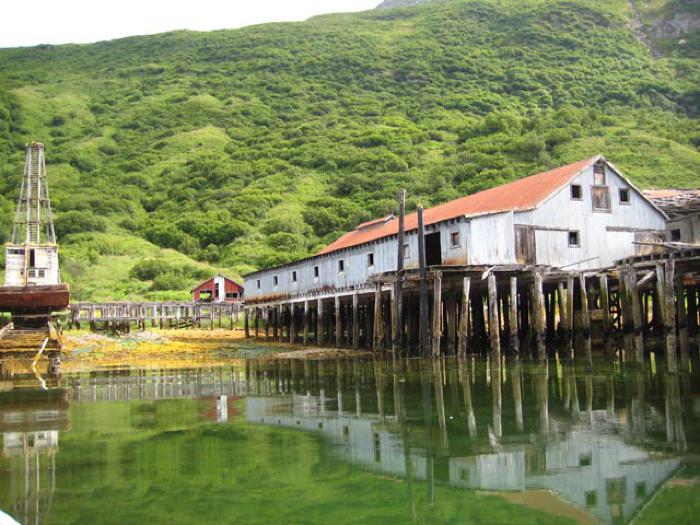Cannery — KaanaRiiq, FaapRiikaaq

In the late nineteenth century, Kodiak’s economy shifted from fur trading to fishing. With sea otter stocks declining, entrepreneurs turned their attention to salmon. Salteries, where people salted fish and packed them in barrels for shipment south, began appearing in the 1870s. The first commercial canneries followed in the 1880s. The Karluk Fishing and Packing Company established a cannery on Karluk spit in 1882. Over the next ten years, entrepreneurs established many similar operations from Afognak Island to Alitak. This booming new industry attracted immigrants from Scandinavia and Asia seeking jobs. Many were single men who married into Alutiiq families. Although Alutiiq people worked as laborers in the early salteries and canneries, it was not until the early twentieth century that they began selling their catches to processors.
Canneries drew the Alutiiq further into the western cash economy. As Native people began working for wages, or for credit at the company store, their dependence on western goods increased. It is during this time that people began to construct western-style houses, to wear more European clothing, and to purchase tools and household items. Many of these purchases were made on credit, which forced Native people to keep working for the cannery to pay their debts. Over the years, the variety of salted and canned foods increased, and Alutiiq people assisted in processing herring, crab, cod, clams, and other seafoods. Cannery work continues to be a source of income for some Alutiiq people, providing opportunities for seasonal employment.
